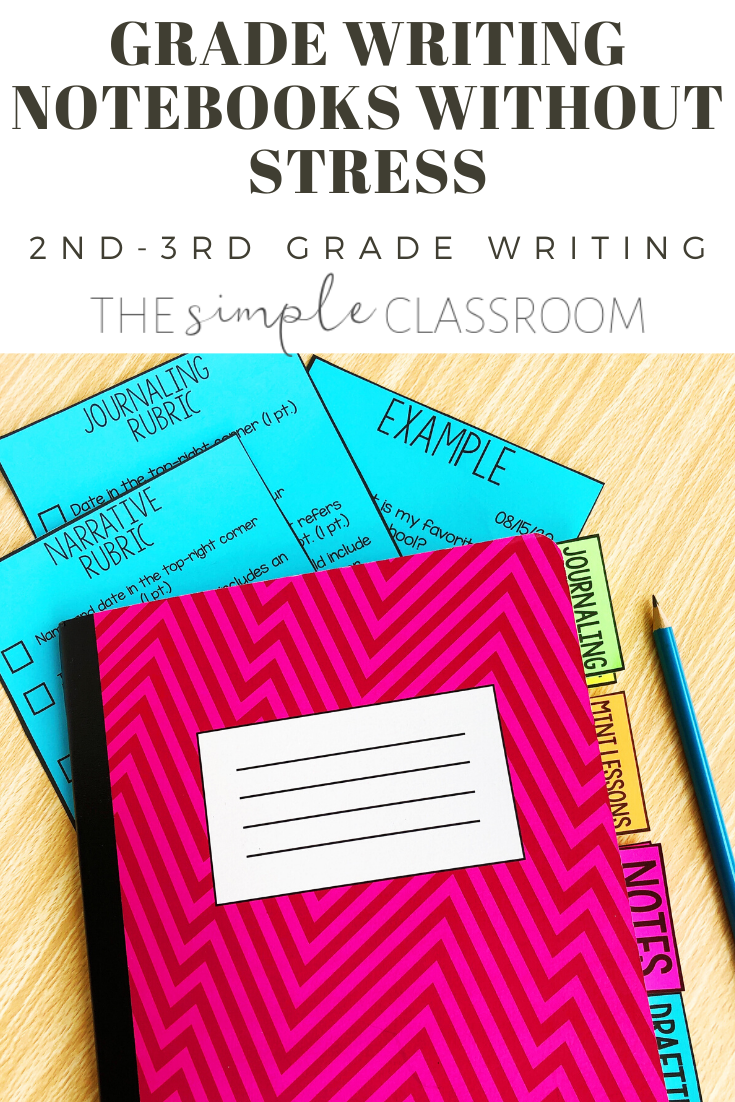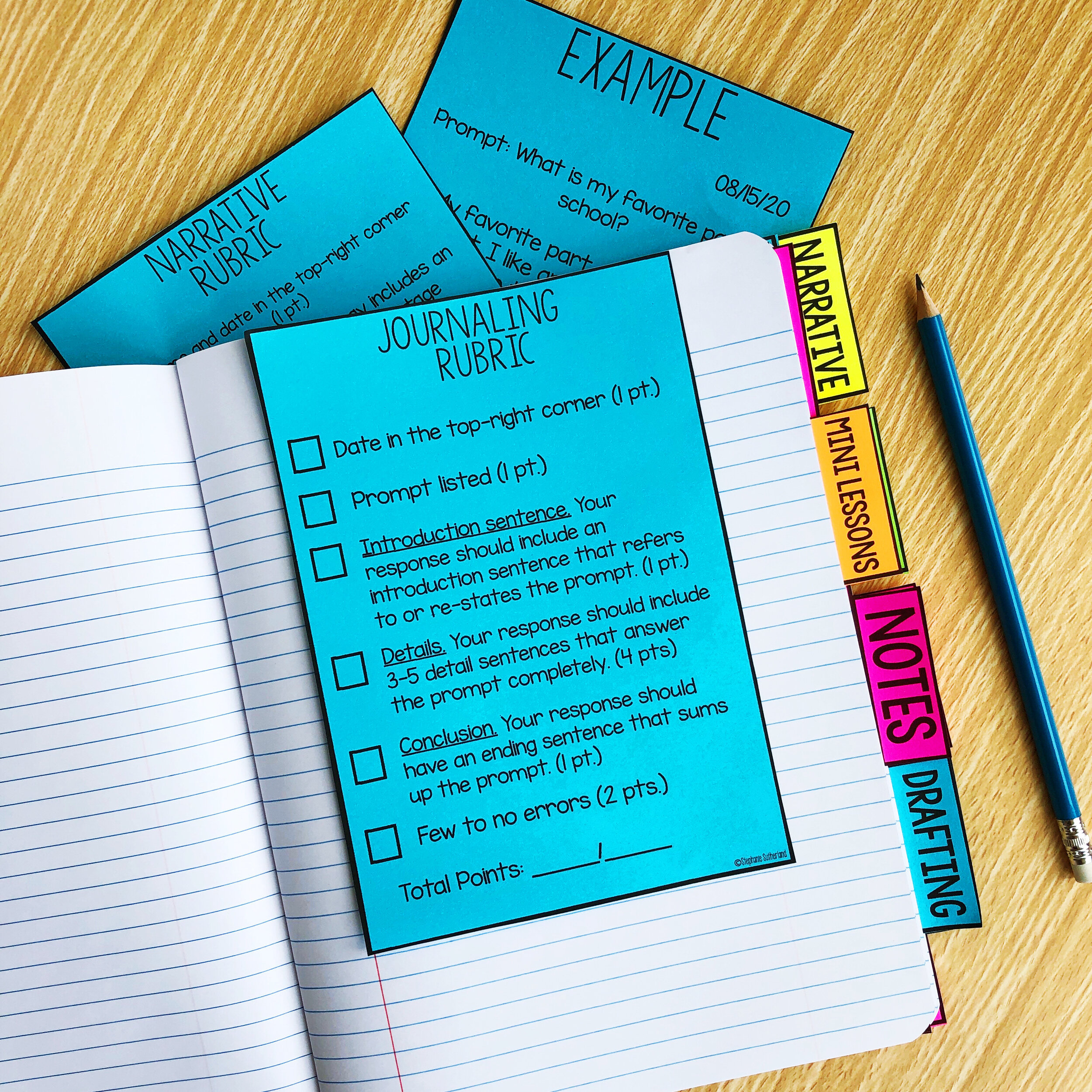The Writing Notebook
I wrote recently that I think it’s important that we give students a daily writing time. But, obviously a logistical issue comes up when you have your students writing every single day of the school year (or at least pretty close to it).
How do we organize all of this writing? How do we keep up with grading it?
The answer is writing notebooks!
Academic notebooks in the classroom are such a great way to collect and organize student work, keep a record of student growth from beginning to the end of the year, and teach students a little bit of autonomy. If you have a section in writing notebook for notes from whole group lessons, the students have an extra resource right there in their desks to use when you spiral review those skills later.
If you have different tabs for different parts of your instruction for the year, students must organize and sort their work accordingly. I believe that this prepares students for the world of binders for different classes, lockers one day, files on computers... all of the different ways that they will be expected to organize themselves in future school years and even their adult life.
So let’s talk about what is inside of a writing notebook, and a simple solution for grading all of this daily writing.
What’s inside the writing notebook?
This is kind of a trick question because the answer is simply whatever you want to be inside of it. I have a writing notebook organization resource in my TPT store that has 11 different divider tabs that you could use. I don’t recommend using all 11. Instead, I would choose three or four sections that you would like your students to keep up with throughout the year. Mini lessons, notes, journaling. Or maybe divide the notebook up by genre that you’re working on and have all of the journaling be narrative-based for a while, then move on to the next genre. You can organize this however you want to!
Once you’ve decided on the sections you want students to keep up with, print and prep those divider tabs in preparation of passing them out at the beginning of the year. I would make notebook set-up a whole group lesson so the students are invested in what each section is, where it goes, and how they need to keep things organized. That will make it a little easier for them to keep their work sorted throughout the year.
How do I keep up with these?
First of all, let me add this disclaimer for you: you do not need to grade every piece of writing that your students put into a notebook. You do not need to grade every piece of work that your students put into any notebook. I don’t believe that’s a feasible recommendation, and it’s the reason that so many teachers abandon notebooks a couple of months into the school year and let them go untouched (or at least looked at) for the remainder of the year.
A Writing Notebook should be a tool to promote growth. So, you need a grading routine that you can keep up with!
I recommend the same grading routine that I use for my Reading Response Notebooks. It works like this:
Give the students an example journal entry and a quick rubric for how you’re going to grade them. Teach your expectations explicitly at the beginning of the year so they know how this is supposed to go.
The students do daily journal writing every day of the week to get the quick exposure to writing that you need them to.
At the end of the week they turn in their writing notebooks, and you pick one day to grade. Just one! Do not reveal this to the students ahead of time so they never know if you’re going to grade Monday’s response, Wednesday’s response, or another day!
Turn to that one day in everyone’s notebook. Briefly read their journal response. Check off the things that they did on the rubric and give them a final score. Write them a quick note of something they did well or could improve upon, if you’d like. If your students set writing goals at the beginning of the year, then you have a guide for what kind of feedback you need to be giving them. I have a post about that here!
Leave the rubric in the notebook on the day that you graded, stick a fun sticky note on the front if you want to be extra (like I usually am). and that’s it!
If you want to record these weekly notebook grades as a grade on their report cards, that’s easy enough to do. If you want to go through their other journal entries and just give them a star for participation, that’s great too. But the only in-depth work you should be doing is with one day of the writing notebook each week. I’m telling you right now I did 22 kids last year in 30 minutes every Friday during their weekly reading test.
And that’s it! Organize the notebooks, involve the kids in that process, and choose one assignment every so often to grade. Grade against a rubric, so the hard part is done for you-you know exactly what to look for. And give some brief written feedback about how they’re doing with their writing goal!
Check out my Writing Notebook on TPT, as well as other Writing Products!












